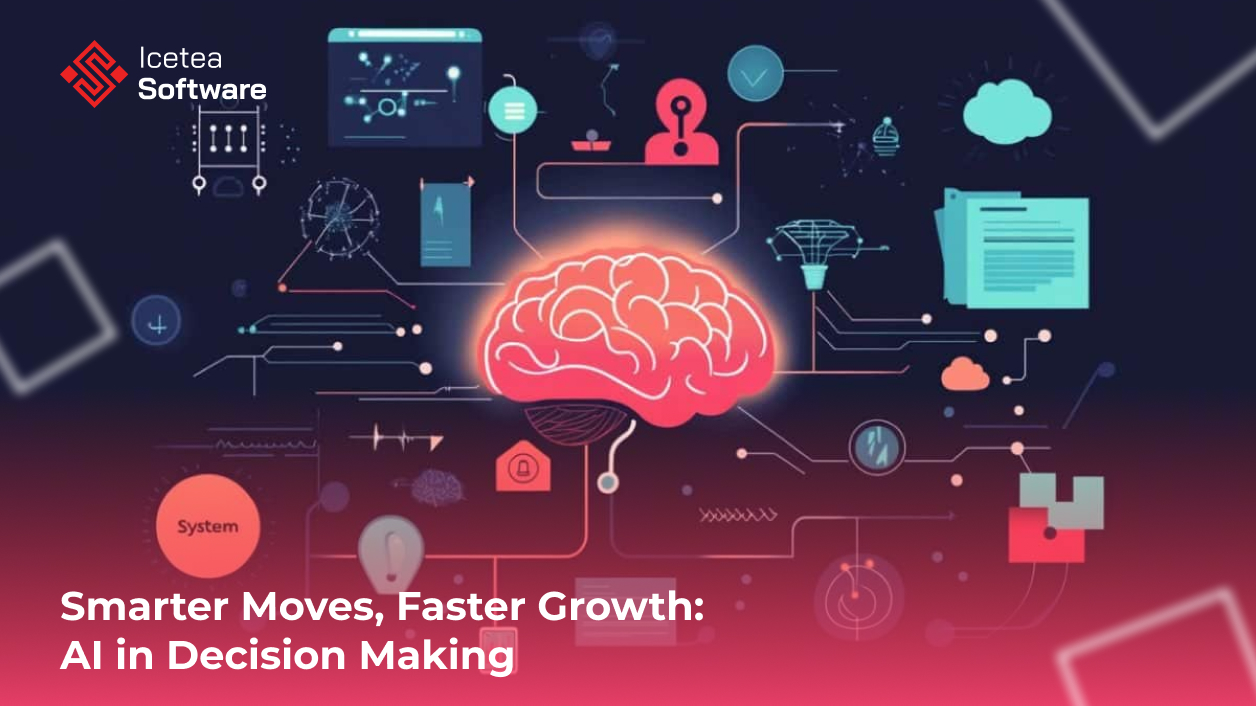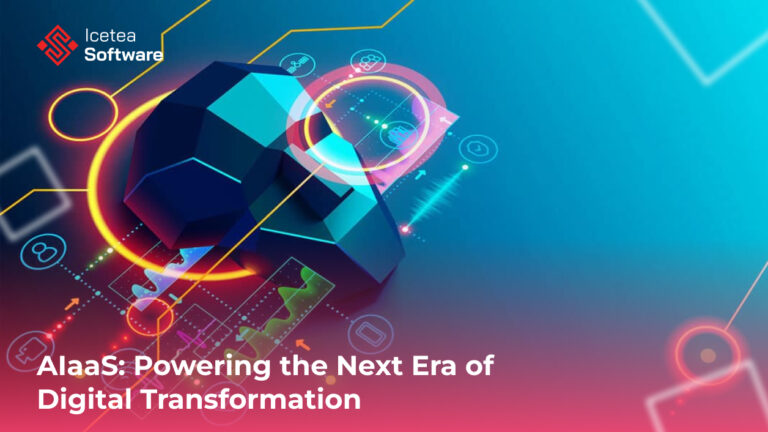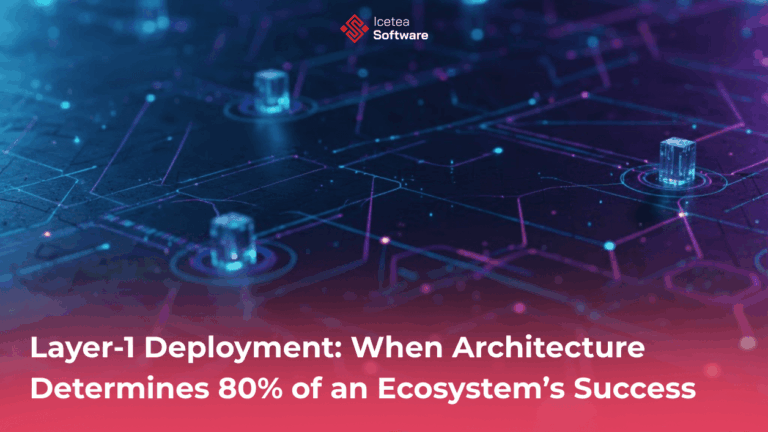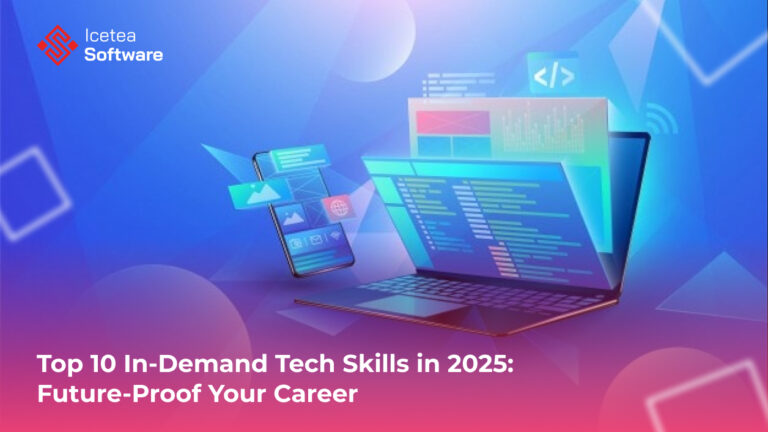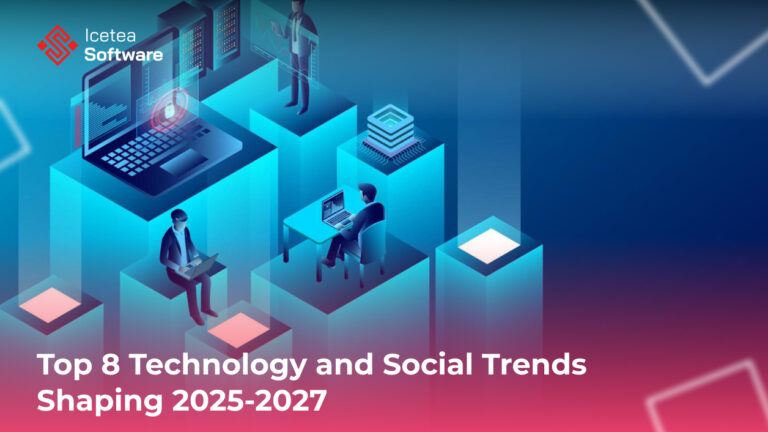Smarter Moves, Faster Growth: AI in Decision Making
In today’s hyper-competitive, data-saturated world, the ability to decide smarter and act faster separates thriving businesses from those struggling to keep up. Traditional decision-making methods—heavily reliant on gut instinct, siloed data, or manual processes—are simply no longer sufficient. Modern organizations are turning to AI-driven decision making as a transformational force that not only increases operational…
In today’s hyper-competitive, data-saturated world, the ability to decide smarter and act faster separates thriving businesses from those struggling to keep up. Traditional decision-making methods—heavily reliant on gut instinct, siloed data, or manual processes—are simply no longer sufficient. Modern organizations are turning to AI-driven decision making as a transformational force that not only increases operational efficiency but also fuels strategic innovation and long-term growth.
So, how exactly do businesses cut through complexity, reduce human error, and make decisions that scale? The answer lies in deploying artificial intelligence to augment the decision-making process—bringing together data, technology, and domain knowledge to empower leaders across every industry.
What Is AI-Driven Decision Making?
AI-driven decision making is the use of artificial intelligence—through techniques like machine learning, natural language processing (NLP), and predictive analytics—to support or automate business decisions. Unlike traditional systems that rely on predefined rules or static reports, AI continuously learns from data, adapts to changes, and produces real-time insights that are context-aware and actionable.
This shift represents more than just a technological upgrade. It redefines how organizations approach problems, optimize resources, and seize opportunities—transforming data from a passive asset into an active driver of value and innovation.
Why It Matters for Growth
AI isn’t just about cost reduction or automation—it’s a growth catalyst. Organizations that leverage AI effectively experience a range of advantages that accelerate both top-line and bottom-line outcomes.
Speed & Scalability
AI processes vast amounts of data in seconds, delivering insights that would take humans days to uncover. This enables faster, more informed decisions across the business—whether at the executive level or on the factory floor.
Data-Backed Precision
AI detects patterns and anomalies in complex datasets that are often invisible to human analysis. This leads to more accurate forecasting, risk management, and strategic planning.
Hyper-Personalization
With AI, companies can tailor experiences to each customer’s preferences, behaviors, and purchase history—boosting engagement, loyalty, and long-term value.
Proactive Strategy
AI’s predictive capabilities allow organizations to anticipate market trends, customer needs, or operational disruptions. This proactive approach to strategy turns uncertainty into opportunity.
In short, AI makes your business smarter—not just faster.
Real-World Applications Across Industries
AI is not a theoretical concept. It’s already integrated into the workflows of industry leaders worldwide, delivering tangible outcomes in real-time.
Retail & E-Commerce
Retailers are using AI to improve demand forecasting, automate inventory management, and adjust pricing dynamically. Personalized product recommendations driven by AI engines are significantly increasing sales, while sentiment analysis of customer reviews helps inform product development and marketing.
Finance & Banking
AI enables instant fraud detection, more inclusive credit scoring using alternative data, and real-time algorithmic trading. Virtual assistants handle routine customer queries, freeing up human agents for higher-value interactions and improving user experience.
Healthcare
AI enhances diagnostics through pattern recognition in imaging and lab data, supports the creation of personalized treatment plans, and helps hospitals optimize resources. From disease prediction to operational efficiency, AI is redefining modern healthcare.
Manufacturing
Manufacturers benefit from predictive maintenance systems that prevent costly equipment failures. AI also ensures real-time quality control, detects defects early, and improves overall production planning by forecasting demand with greater accuracy.
Tools of the Trade
To support AI-driven decision making, organizations use a wide range of intelligent tools and platforms, including:
- Google Cloud AI & ML – Provides APIs and tools for vision, speech, forecasting, and structured data analytics.
- Microsoft Power BI (AI Insights) – Empowers non-technical users to generate AI-powered dashboards.
- IBM Watson – A robust suite of AI services for NLP, business process automation, and industry-specific analytics.
- AutoML Platforms – Enable non-data scientists to build, train, and deploy custom ML models without writing code.
These platforms democratize AI adoption and make advanced analytics accessible to every team—from marketing and HR to logistics and product development.
AI Adoption in Business: Strategic Approaches
Successfully adopting AI begins with strategic alignment. Businesses must clearly define where AI can deliver the greatest value—be it customer service, operational efficiency, or product innovation. Prioritizing high-impact, ROI-driven projects ensures early momentum and measurable success.
A phased implementation roadmap allows organizations to start small pilot projects, gather feedback, and scale based on outcomes. Setting clear KPIs, involving cross-functional teams, and creating a feedback loop for iteration are crucial to maturing AI capabilities over time.
Measuring AI’s ROI requires a shift from traditional metrics. Businesses should assess both tangible (e.g., revenue gains, efficiency savings) and intangible (e.g., improved agility, better decision quality) returns. AI should not only reduce costs—but enable long-term, sustainable growth and market differentiation.
Cutting-Edge AI Methods for Better Decisions
Beyond common machine learning techniques, organizations are beginning to explore more advanced AI models to drive smarter decisions.
Reinforcement Learning
This method trains AI agents in simulated environments to make optimized decisions through trial and error. It’s ideal for complex scenarios like resource allocation, logistics, and real-time pricing, where conditions constantly evolve.
Generative Models (GANs)
Generative Adversarial Networks (GANs) are transforming innovation cycles. These models can simulate new product designs, test performance in virtual environments, and speed up the R&D process—allowing companies to bring ideas to market faster than ever.
Challenges to Watch Out For
While the opportunities are immense, AI adoption does come with challenges:
- Data Quality & Governance: AI relies on accurate, clean, and consistent data. Organizations must invest in data management practices to ensure reliability.
- Bias & Transparency: Algorithms trained on biased data can produce unfair outcomes. Explainable AI and regular audits are essential to maintain trust.
- Organizational Readiness: Resistance to change and lack of AI understanding can stall progress. Upskilling teams and building a data-driven culture are key.
- Cost & Complexity: AI projects can be resource-intensive. Leveraging cloud-based platforms and partnering with experts helps reduce barriers to entry.
- Security & Compliance: AI must be built with privacy, ethics, and regulation in mind—especially when handling sensitive or personal data.
Proactively addressing these hurdles is crucial to building resilient, ethical, and future-ready AI systems.
Final Thoughts
AI isn’t just a tool—it’s a strategic enabler of transformation. Businesses that embrace AI-driven decision making are moving beyond automation to build organizations that are smarter, faster, and more resilient. They’re not just reacting to change—they’re anticipating it. By embedding AI into core operations, companies unlock new opportunities for growth, optimize decision-making across functions, and gain the agility to pivot in an increasingly dynamic market.
At Icetea Software, we don’t stop at implementation. We partner with businesses to design and build intelligent, domain-oriented data ecosystems that empower teams to act with autonomy and insight. With modular design, self-service platforms, and robust interoperability, we help companies align data strategy with real business outcomes.
As organizations push toward full data maturity, success hinges on more than just technology. It requires a synergy between automated intelligence and human judgment, between scalable platforms and domain expertise. That’s where Icetea Software comes in—bridging these worlds to help companies build systems that are not only technically advanced but also aligned, adaptive, and truly future-ready.
Whether you’re just beginning your AI journey or scaling across the enterprise, Icetea Software is here to help you unlock the full potential of your data—fueling smarter decisions, greater innovation, and sustainable competitive advantage.
————————–
𝗜𝗰𝗲𝘁𝗲𝗮 𝗦𝗼𝗳𝘁𝘄𝗮𝗿𝗲 – Cutting Edge Technologies!
Website: iceteasoftware.com
LinkedIn: linkedin.com/company/iceteasoftware
Facebook: Icetea Software
